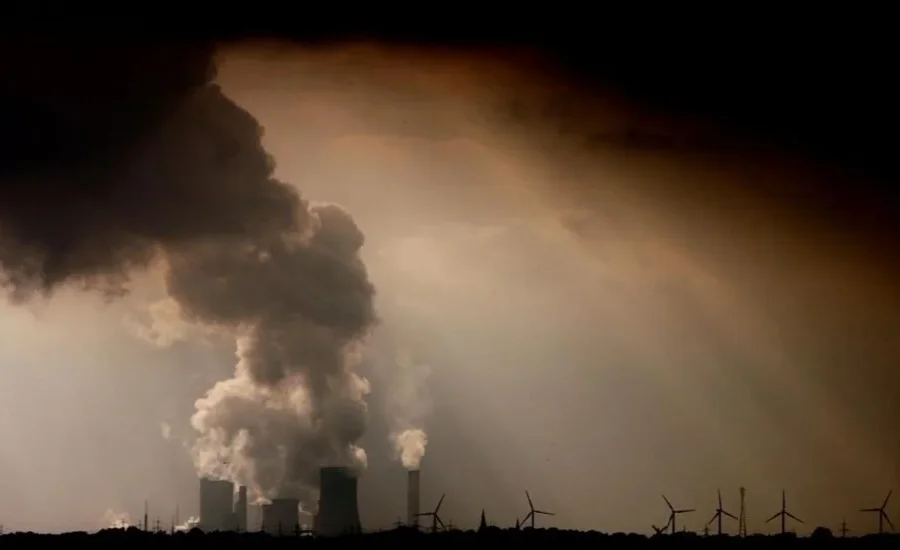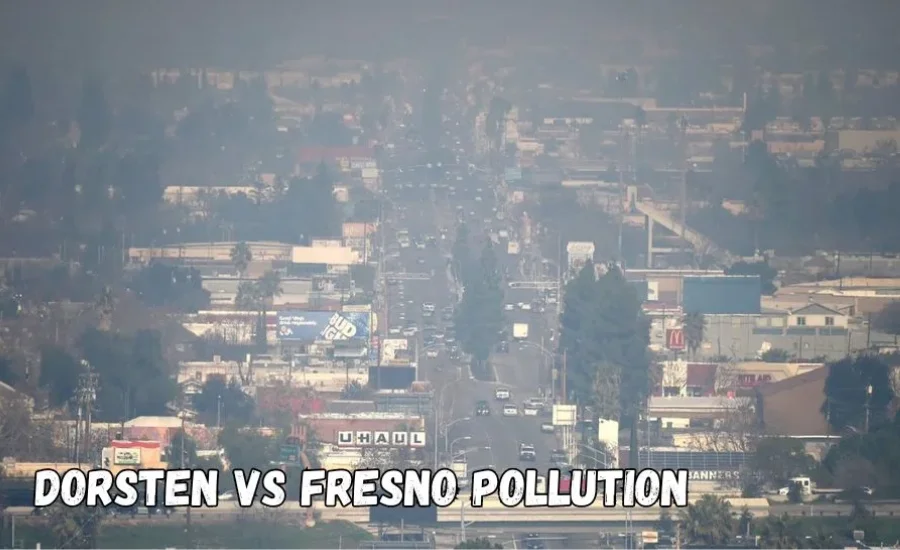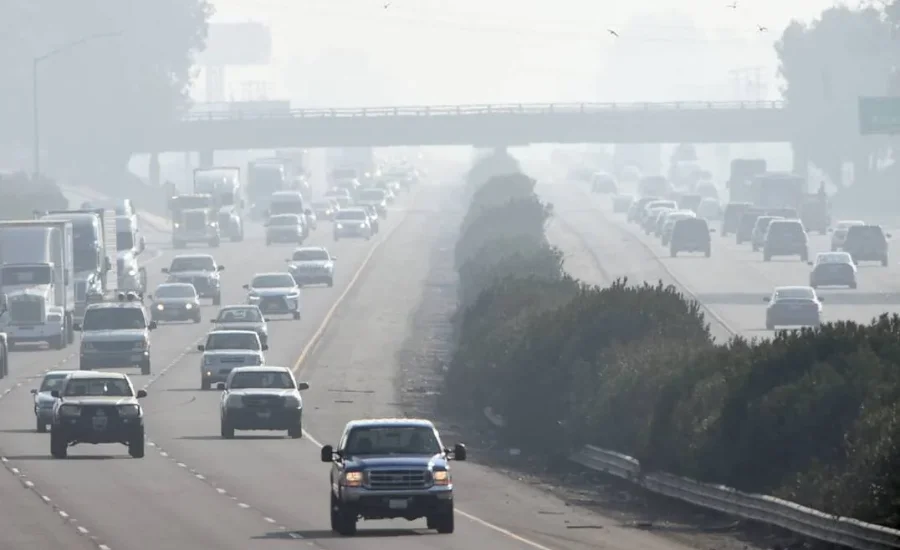Concerns about air Dorsten VS Fresno Pollution Coparament: have intensified globally, impacting both large cities and smaller towns. This article explores the contrasting pollution landscapes of Dorsten, Germany, and Fresno, California, highlighting the environmental and health implications in these distinct geographic locations. While both cities grapple with their unique pollution challenges, the causes, consequences, and responses vary significantly.
In Dorsten, the air quality is influenced by industrial activities and transportation emissions, leading to elevated levels of particulate matter and other pollutants. The city’s efforts to address these issues include stricter regulations on emissions and promoting public transportation. In contrast, Fresno faces significant challenges from agricultural practices and vehicle emissions, contributing to high ozone levels and smog formation. Local initiatives in Fresno aim to reduce pollution through the promotion of electric vehicles and stricter air quality standards.
The health impacts of air pollution in both cities are profound. Residents in Dorsten may experience respiratory issues and other health problems related to exposure to industrial pollutants. Similarly, Fresno’s population is at risk of developing chronic conditions due to poor air quality, particularly during the summer months when smog is most prevalent.
Comparing Dorsten, Germany, and Fresno, California: A Look at Urban Characteristics and Pollution Challenges

Dorsten is a mid-sized town situated in North Rhine-Westphalia, Germany, with a population of approximately 80,000 residents. Once known as an industrial hub, the town has gradually shifted towards a service-oriented economy, although some industrial activities remain. Dorsten is marked by its densely populated areas and its closeness to larger urban centers, factors that can exacerbate pollution issues.
In contrast, Fresno is one of the largest cities in California, located in the heart of the San Joaquin Valley. With a population exceeding 500,000, Fresno functions as a crucial agricultural and economic center for the region. However, its geographic positioning presents distinct challenges; the surrounding mountains can trap pollutants, leading to significant air quality concerns.
Both cities grapple with their unique Dorsten VS Fresno Pollution Coparament: landscapes influenced by their histories, economies, and geographic locations. Understanding the dynamics in Dorsten and Fresno helps to illuminate the broader issues related to urban air quality and the need for targeted solutions to mitigate pollution.
Industrial and Transportation Dynamics: A Comparative Analysis of Dorsten and Fresno
Dorsten features a diverse industrial landscape that includes manufacturing and logistics. This sector operates under stringent European Union regulations designed to reduce emissions. While there are ongoing initiatives to transition towards greener technologies, legacy Dorsten VS Fresno Pollution Coparament: from older industrial facilities remains a concern for the community.
In contrast, agriculture plays a vital role in Fresno’s economy but also contributes significantly to environmental challenges. The use of pesticides and fertilizer runoff is a major source of pollution, while the extensive highway system results in high vehicle emissions, further deteriorating air quality.
Transportation strategies in Dorsten prioritize public transit and cycling to help mitigate vehicular emissions. The city has invested in electric buses and offers incentives for electric vehicles (EVs) to promote cleaner transportation alternatives.
Conversely, Fresno’s transportation infrastructure is heavily reliant on personal vehicles. Although there are initiatives to enhance public transit options and improve bicycle lanes, many residents still opt for cars, leading to elevated emissions. Progress in expanding public transportation has been slow, highlighting the challenges faced by the city in addressing its air quality issues.
Health Impacts of Air Pollution: A Comparative Overview of Dorsten and Fresno
The health effects of air pollution in both Dorsten and Fresno are concerning, yet they exhibit significant differences due to the types of pollutants present in each city. In Dorsten, residents have reported an increase in respiratory illnesses such as allergies and bronchitis, which are often attributed to emissions from local industries and traffic-related Dorsten VS Fresno Pollution Coparament: . Although levels of harmful pollutants have decreased, long-term exposure to even low concentrations of particulate matter (PM2.5) and nitrogen dioxide (NO2) can lead to serious health issues.
On the other hand, Fresno experiences more severe health consequences linked to persistent air quality challenges. High concentrations of ozone and particulate matter contribute to a variety of health problems, including chronic obstructive pulmonary disease (COPD), cardiovascular diseases, and an increased risk of premature death. Vulnerable groups, such as children and the elderly, face heightened risks. Additionally, wildfire smoke significantly worsens these health threats, as it contains harmful chemicals that can lead to long-lasting lung damage.
Water Quality Management and Environmental Initiatives in Dorsten

Dorsten places a high priority on safeguarding clean water sources and ensuring that residents have access to safe drinking water. The city has implemented various initiatives aimed at effectively monitoring and managing water quality to protect public health and the environment.
Key sources of water pollution in Dorsten include industrial discharges and agricultural runoff. Factories and industrial facilities pose a risk when inadequate wastewater treatment measures are in place, potentially releasing harmful pollutants into local waterways. Similarly, the use of fertilizers, pesticides, and herbicides in agriculture can lead to nutrient pollution and contamination of nearby rivers and lakes.
To address these challenges, Dorsten has undertaken several proactive measures to enhance water quality. The city operates state-of-the-art wastewater treatment plants that ensure sewage and industrial effluents are thoroughly treated before being discharged into water bodies. Additionally, regular monitoring programs are in place to assess the quality of local water sources, allowing for timely identification and resolution of pollution sources. This approach enables quick interventions to prevent contamination effectively.
Comparative Analysis of Dorsten VS Fresno Pollution Coparament: Challenges in Dorsten and Fresno
It is clear from comparing the pollution problems in Dorsten and Fresno that both cities have serious problems with air quality, but to quite different degrees and in different ways. Dorsten’s air quality has improved significantly as a result of stringent laws and developments in technology. The accomplishments of the city are mostly attributable to a unified approach to environmental regulations that is informed by guidelines from the European Union.
In contrast, Fresno grapples with more complex air quality issues, primarily driven by its geographic location and seasonal wildfires. The city’s positioning in the San Joaquin Valley often leads to the trapping of pollutants, exacerbating air quality problems. Additionally, the impacts of climate change present further difficulties that are challenging to manage at the local level.
Air and Water Quality: A Comparative Analysis of Dorsten and Fresno

A comparison of air pollution levels in Dorsten and Fresno reveals significant differences in environmental quality. Dorsten enjoys relatively low levels of PM2.5 and ozone, thanks to effective regulatory measures and cleaner industrial practices. The city’s proactive approach to emissions control has led to improved air quality, benefiting its residents.
Fresno, on the other hand, struggles with far greater levels of air pollution, mostly from agriculture and heavy traffic. The continuous issues with Fresno’s air quality highlight the critical need for continued efforts to cut emissions and safeguard human health.
In terms of water quality, Dorsten is notable for its efficient management and monitoring procedures that guarantee the community’s access to safe and clean water sources. The city’s dedication to community involvement and wastewater treatment has paid off in terms of preserving water quality.
On the other hand, Fresno has serious problems with water contamination, which are mostly caused by old infrastructure and agricultural runoff. Preserving local water resources and ensuring public health require addressing these concerns.
The health impacts of Dorsten VS Fresno Pollution Coparament: further highlight the disparities between the two cities. Residents of Dorsten benefit from better overall health outcomes due to lower exposure to air pollutants. Although some industrial activities exist, the city’s proactive measures have fostered a healthier living environment.
You may also like: Samuel Guez VTT
Final Words
In conclusion, the comparison of air and water quality between Dorsten and Fresno underscores the profound impact of environmental policies and geographic factors on public health. Dorsten’s proactive approach to Dorsten VS Fresno Pollution Coparament: control and community engagement has resulted in significant improvements in air and water quality, contributing to better health outcomes for its residents. Conversely, Fresno faces ongoing challenges, primarily driven by agricultural practices and heavy vehicular traffic, which have detrimental effects on air quality and public health.
Addressing these environmental issues is crucial for Fresno, as it strives to implement effective strategies to mitigate pollution and safeguard the well-being of its community. By learning from the successes of cities like Dorsten and prioritizing sustainable practices, Fresno can work towards a healthier future for its residents. Collaborative efforts involving government agencies, local organizations, and the community are essential to create lasting change and foster a cleaner, safer environment for generations to come.
For more information and updates join us Discover Outlooks.
